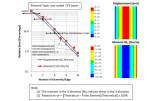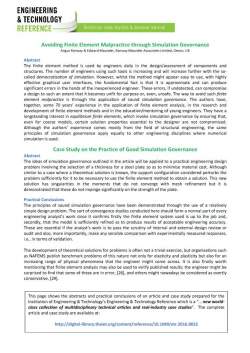Avoiding Finite Element Malpractice through Simulation Governance
Authors
Angus Ramsay
Edward Maunder
Abstract
The finite element method is used by engineers daily in the design/assessment of components and structures. The number of engineers using such tools is increasing and will increase further with the so-called democratisation of simulation. However, whilst the method might appear easy to use, with highly effective graphical user interfaces, the fundamental fact is that it is approximate and can produce significant errors in the hands of the inexperienced engineer. These errors, if undetected, can compromise a design to such an extent that it becomes unfit for purpose or, even, unsafe. The way to avoid such finite element malpractice is through the application of sound simulation governance. The authors have, together, some 70 years’ experience in the application of finite element analysis, in the research and development of finite element methods and in the education/mentoring of young engineers. They have a longstanding interest in equilibrium finite elements, which invoke simulation governance by ensuring that, even for coarse models, certain solution properties essential to the designer are not compromised. Although the authors’ experience comes mostly from the field of structural engineering, the same principles of simulation governance apply equally to other engineering disciplines where numerical simulation is used.

















